Metal Injection Molding (MIM) is a high-precision metal part manufacturing process for complex structures. This molding process combines metal powder, injection molding and sintering techniques to ensure that MIM parts can have precision tolerances and excellent surfaces. In addition, the selection of metal powders with different sizes and shapes and supplemental additives will produce different chemical and physical properties of the MIM part, and the binder composition of each powder particle will determine the final shape hardness.
The BRM team will work with you to evaluate MIM production costs, materials, and manufacturing feasibility. We will also suggest design adjustments to achieve the best results for metal injection molding
The major steps in MIM include: mixing, injection molding, degreasing, and sintering.
Raw material production is the first step in the MIM manufacturing process where very fine metal powders (typically less than 15 microns) are mixed with a binder component consisting of a primary paraffinic material, a secondary thermoplastic polymer and other materials used. In this step, all very fine elemental or pre-alloyed metal powders will be extensively characterized by uniformly coating the binder to achieve the flow properties required in the next injection molding process.
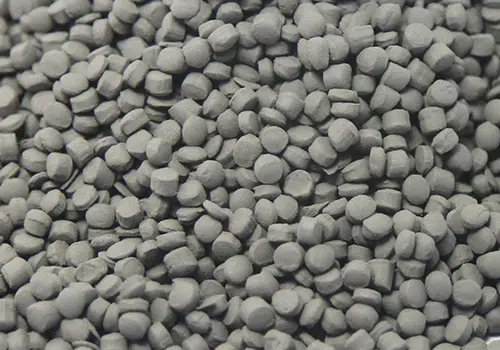
The mixture will be granulated by cooling into pellets for injection molding machines as a raw material, and the binder typically contains 40% by volume of the raw material. mim can achieve a theoretical density of 95-100% compared to 80-90% for standard powder metallurgy.
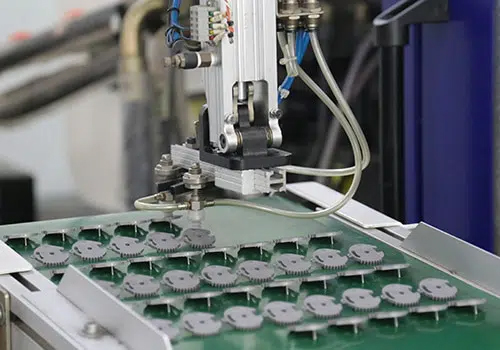
This step is for molding MIM parts in a conventional molding machine.
The raw material particles are fed by gravity through the hopper into the molding machine barrel.
The binder in the raw material will then be heated by a heater in the barrel, which will melt the raw material to a toothpaste consistency.
The reciprocating screw will force the molten material into the mold consisting of two parts by opening the gate.
After cooling, the raw part with fully formed geometry will be discharged from the mold.
Usually, we call the raw part the billet part, which still consists of the same proportions of metal powder and binder as raw material. However, due to the expansion of the binder, its size will be 20% larger than the finished MIM part (depending on the binder volume).
In this step, we can also easily add special design features such as nibbled edges or cross holes, which are not feasible in the molding process but are easily accessible by machining or secondary manipulation methods.
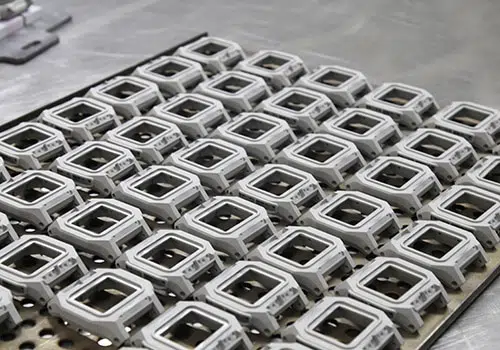
The degreasing or adhesive removal step is a controlled process to remove most of the adhesive and leave enough adhesive for the skeleton, which will keep the part size and geometry fully intact. The process is performed chemically (catalytic degreasing) or thermally, and in some cases a solvent or water bath will be the initial step. The method of degreasing depends on the type of material processed, its physical and metallurgical properties, and its chemical composition. The degreased part is called a brown part.
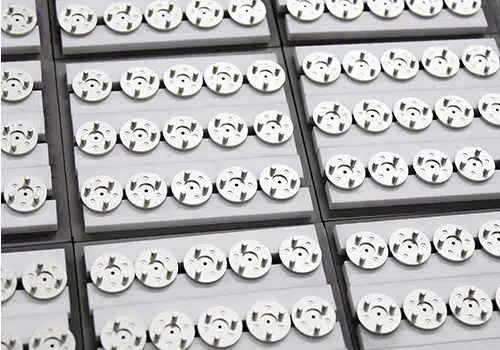
Sintering usually takes place at a temperature slightly below the liquid/solid temperature, which is also called solid state sintering. At this temperature, the metal powder will become the atomic driving force for the metal particles to bond and form the final natural density fraction. We know that the sintering temperature of a metal or alloy is lower than the melting temperature. During the sintering process, brown parts are placed on ceramic holders and then placed in a bath or continuous furnace with a protective or vacuum atmosphere. A precise temperature distribution will be controlled and monitored to gradually increase to a specific temperature.
The process will remove the remaining binder in early cycles and then the metal particles will fuse to eliminate surface porosity while the part is isotropically shrinks to the design size and transforms into a dense solid. In fact, the final MIM part shrinks by almost 20% in each dimension due to the loss of binder space. Sintering can achieve a theoretical density of 98% in a pre-controlled process, and this final product is a mesh metal part with mechanical and physical properties similar to those of conventional metal processing methods.
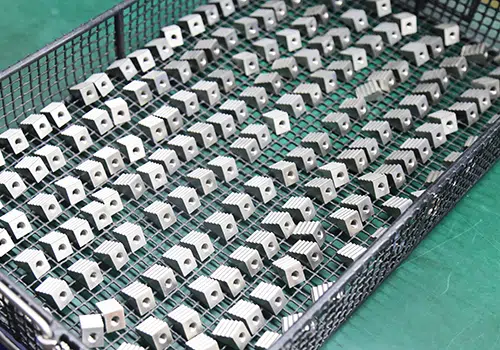
Secondary operations are used to improve final part material properties, achieve tight tolerances, enhance cosmetic surfaces or assemble other components. mim parts can be machined, tapped, drilled, broached, ground or welded using the same operations as forged parts. Hot isostatic pressing and heat treatment will improve the strength, hardness and wear resistance of MIM parts. Because of the low interconnect porosity of MIM parts, standard coloring and plating can be applied without surface treatment.
BRM post-sintering operations include.
Imprinting | Forcing the sintered part to conform to a rigid mandrel straightens the substrate to ensure the desired flatness and dimensions of the MIM part. This process will reduce the unfolded dimensions to obtain the proper dimensional characteristics. |
Machining | All common machining methods are applicable to sintered MIM parts, such as adding threads, undercuts, recesses, ultra-precise tolerances, or special features. |
Heat Treatment | The sintering process puts the MIM part in an annealed condition, and the heat treatment regulates the hardness and other properties of the high-carbon iron alloy. Precipitation-hardening stainless steels require thermal cycling to optimize their mechanical properties. Sometimes, heat treatment is incorporated into the sintering cooling cycle. |
Heat Deformation | The sintered part will be heated and deformed by a rapid forging stroke to ensure proper size and density. The strength of the steel will increase from 500Mpa when sintered to 720Mpa when heat deformed. |
Surface Carburization | Carbon is an important element to obtain high strength steel, and using methane atmosphere heating cycle will obtain high surface hardness on MIM parts. Surface carburization can lead to loss of dimensional accuracy, so we need to weigh the surface hardness and dimensional accuracy of MIM parts. |
Joining | Sintered parts can be joined to other metal parts by welding, brazing or bonding techniques. the properties of the metal material of MIM parts are the same as those of standard metals, and laser welding is very effective for MIM stainless steel. |
Surface Treatment | MIM parts can be applied by various surface treatments such as polishing, coating, painting, cleaning, anodizing, plating, sealing and laser varnishing. Electroplating is used to improve the aesthetics and corrosion resistance of MIM parts. Nickel plating is ideal for instruments, firearms and magnetic parts. |
Hot Isostatic Pressing (HIP) | MIM parts typically have a density of 96-98% after the sintering process. the HIP treatment will increase the density to 100%. The sintered part will be loaded into a sealed chamber, then the chamber is heated and argon gas is introduced. The heated gas creates a pressure that collapses the internal pores and compresses the MIM part. |
Contact: Cindy Wang
Phone: +86 19916725892
Tel: 0512-55128901
Email: [email protected]
Add: No.6 Huxiang Road, Kunshan development Zone, JiangsuShanghai Branch: No. 398 Guiyang Rd, Yangpu District, Shanghai, China